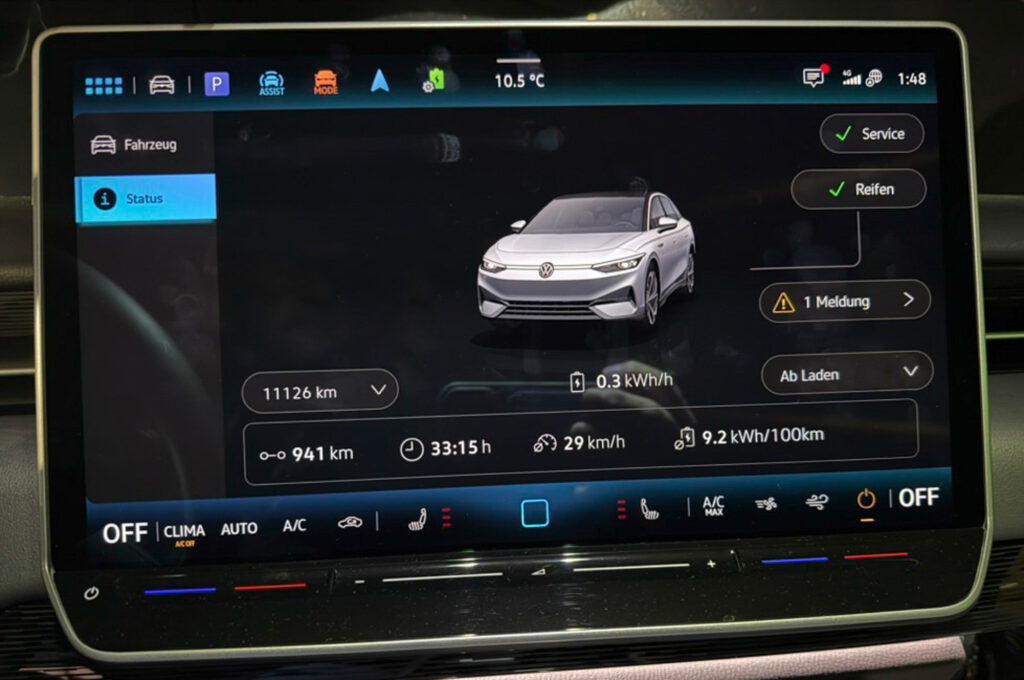- A bone-stock VW ID.7 electric sedan achieved 585 miles on one charge during an official VW test.
- The unmodified fastback used a regular 86 kWh battery but beat the official range figure by a third.
- Engineers recorded the ID.7’s efficiency as an incredibly low 9.2 kWh/100 km or 6.7 miles per kWh.
If you’ve driven an EV on a long trip on unfamiliar roads you’ll know that range anxiety is all too real. That 350-mile (563 km) official range the salesman promised you often turns out to be 270 miles (435) in real conditions, and much less in winter. But in a recent test VW’s ID.7 didn’t just match the 350-mile range of a petrol car, it came close to the bladder-busting range of a diesel.
In a controlled event at Porsche’s Nardo test facility in southern Italy, an ID.7 Pro S managed 585 miles (941 km) on a single charge. That’s a third more than the WLTP claimed range of 441 miles (709 km), which is already impressive by EV standards, though WLTP figures are notoriously optimistic.
Related: VW ID.7 Pro S Beats Range Anxiety, Does 493 Miles On Single Charge
You can, of course, extract crazy numbers from any EV if you fit it with a monster battery, strip out the interior to save weight and add special tires and make aerodynamic enhancements. But the ID.7 on test was a entirely standard, right down to its 86 kWh battery, and anyway, the slippery sedan already has a drag coefficient of just 0.23 Cd.
The Pro S version of the ID.7 is equipped with a single 282 hp (286 PS / 210 kW) electric motor that drives the rear wheels. It can accelerate from zero to 62 mph (100 kmh) in 6.6 seconds and has a top speed of 112 mph (180 kmh), though VW’s drivers won’t have exploited either of those capabilities during the test in which the EV achieved efficiency figures of 9.2 kWh/100km (6.9 miles per kWh or 149 Wh/mile). Ambient temperatures ranged from 41-59 F (5-15 C).

Is the ID.7 a continent-crushing EV to make diesel lovers go electric? Maybe not. VW used Nardo’s Low-Speed Ring, which runs just inside the famous 7.8-mile (12.5 km) high-speed bowl and allows automakers to simulate real-world traffic conditions. The ID.7 averaged only 18 mph (29 kmh) which VW says reflects typical rush-hour speeds in European cities.
So the test is better seen as showing that you could commute to work for a couple of weeks in an ID.7 without needing to go near a charger, rather than proving you could drive from San Francisco to Tijuana at motorway speeds without plugging in along the way. But it’s impressive all the same.







